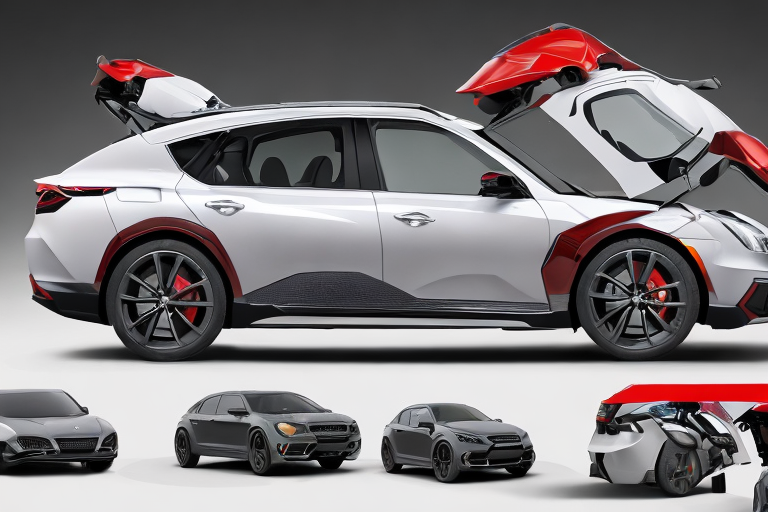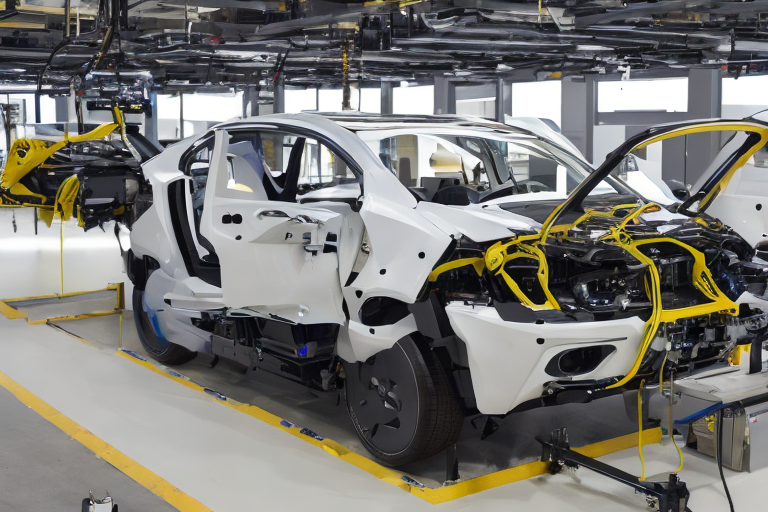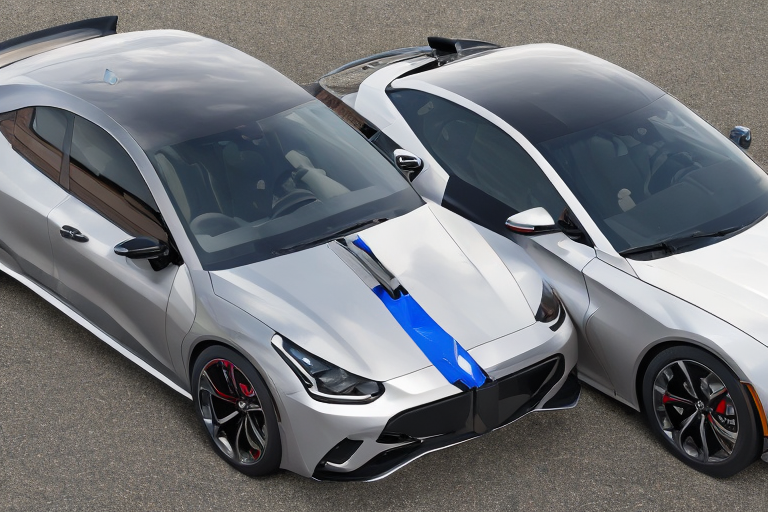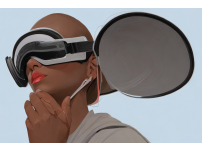자동차 산업에서 가상현실(VR)의 역할: 설계 및 테스트 강화(The Role of Virtual Reality in the …
본문

가상 현실(VR) 기술은 설계 및 테스트 프로세스를 향상시키는 새롭고 혁신적인 방법을 제공하면서 자동차 산업에서 점점 더 중요한 역할을 하고 있습니다. VR은 초기 설계 개념에서 최종 테스트 및 검증에 이르기까지 차량 개발을 간소화하여 자동차 제조업체에 보다 효율적이고 비용 효율적인 솔루션을 제공합니다.
자동차 산업에서 VR이 사용되는 주요 방법 중 하나는 설계 프로세스를 개선하는 것입니다. VR은 설계자가 가상 환경에서 아이디어를 시각화할 수 있도록 하여 설계를 테스트하고 세분화할 수 있는 보다 몰입적이고 상호 작용적인 방법을 제공합니다. 이를 통해 물리적 프로토타이핑과 관련된 시간과 비용을 줄일 수 있어 제조업체가 신차를 보다 빠르고 효율적으로 시장에 출시할 수 있습니다.
VR은 또한 차량 테스트를 위한 보다 안전하고 제어된 환경을 제공하면서 테스트 및 검증 프로세스를 개선하는 데 사용되고 있습니다. 예를 들어, VR은 극한 기후 조건이나 고속 주행과 같은 실제 주행 시나리오를 시뮬레이션하는 데 사용될 수 있으므로 제조업체는 광범위한 조건에서 차량의 안전 및 성능을 테스트할 수 있습니다. 또한 VR은 실제 차량에 통합되기 전에 자율 주행 시스템과 같은 새로운 기술을 테스트하는 데 사용될 수 있어 공공 도로에서의 테스트와 관련된 위험을 줄일 수 있습니다.

한국에서는, 현대와 기아 자동차를 포함하여, 몇몇 자동차 제조업체와 공급업체들이 이미 VR 기술을 채택했습니다. 이 회사들은 VR을 사용하여 설계 및 테스트 프로세스를 개선하여 차량 개발을 위한 보다 효율적이고 비용 효율적인 솔루션을 제공하고 있습니다. 예를 들어, 현대는 전기 자동차를 테스트하기 위해 VR을 사용하여 실제 주행 시나리오를 시뮬레이션하고 광범위한 조건에서 차량의 성능을 평가할 수 있습니다.
결론적으로, VR은 설계 및 테스트 프로세스를 향상시키는 새롭고 혁신적인 방법을 제공하면서 자동차 산업에서 점점 더 중요한 역할을 할 준비가 되어 있습니다. VR 기술이 계속 발전함에 따라, 우리는 차량의 설계 및 개발 방식을 더욱 변화시키면서 업계에서 훨씬 더 많은 기술 적용을 보게 될 것입니다.
그러나, 잠재적인 이점에도 불구하고, 자동차 산업에서 VR 기술의 채택은 어려움이 없는 것은 아니다. 예를 들어, VR 하드웨어와 소프트웨어는 비용이 많이 들어 제조업체의 상당한 투자가 필요할 수 있습니다. 또한, 설계 및 테스트 과정에서 VR 기술을 효과적으로 활용할 수 있는 숙련된 전문가가 필요합니다.

게다가, 눈의 피로와 멀미와 같은, VR이 인간의 행동과 건강에 미치는 영향에 대한 우려도 있습니다. 이는 업계에서 점점 더 우려되는 분야이며 제조업체는 VR이 직원과 고객에게 미칠 수 있는 부정적인 영향을 최소화하기 위한 조치를 취해야 합니다.
이러한 과제에도 불구하고 자동차 산업에서 VR의 이점은 분명하며, 기술을 효과적으로 활용할 수 있는 제조업체는 상당한 이점을 얻을 것으로 보입니다. VR은 설계 프로세스를 개선하든, 테스트 및 검증을 강화하든, 비용과 위험을 줄이든 간에 자동차 산업의 미래에 중요한 역할을 할 수 있는 잠재력을 가지고 있습니다.
결론적으로, VR 기술은 설계 및 테스트 프로세스를 향상시키는 새롭고 혁신적인 방법을 제공하면서 자동차 산업에서 점점 더 중요한 역할을 할 준비가 되어 있습니다. VR의 이점은 여전히 해결해야 할 과제가 있지만, VR은 업계의 기업과 개인이 탐구할 가치가 있는 기술입니다. VR이 계속 발전함에 따라, 우리는 차량이 설계되고 개발되는 방식을 더욱 변화시키면서 기술의 훨씬 더 혁신적인 사용을 보게 될 것입니다.
Virtual Reality (VR) technology is playing an increasingly important role in the automotive industry, offering new and innovative ways of enhancing design and testing processes. VR has the ability to streamline the development of vehicles, from initial design concepts to final testing and validation, providing a more efficient and cost-effective solution for automotive manufacturers.
One of the key ways VR is being used in the automotive industry is to improve the design process. VR allows designers to visualize their ideas in a virtual environment, providing a more immersive and interactive way to test and refine designs. This can help reduce the time and costs associated with physical prototyping, allowing manufacturers to bring new vehicles to market more quickly and efficiently.
VR is also being used to enhance testing and validation processes, providing a safer and more controlled environment for vehicle testing. For example, VR can be used to simulate real-world driving scenarios, such as extreme weather conditions or high-speed driving, allowing manufacturers to test the safety and performance of vehicles under a wide range of conditions. Additionally, VR can also be used to test new technologies, such as autonomous driving systems, before they are integrated into real vehicles, reducing the risks associated with testing on public roads.
In Korea, several automotive manufacturers and suppliers have already embraced VR technology, including Hyundai and Kia Motors. These companies are using VR to enhance their design and testing processes, providing a more efficient and cost-effective solution for vehicle development. For example, Hyundai has used VR to test its electric vehicles, allowing the company to simulate real-world driving scenarios and assess the performance of its vehicles under a wide range of conditions.
In conclusion, VR is poised to play an increasingly important role in the automotive industry, offering new and innovative ways of enhancing design and testing processes. As VR technology continues to evolve, it is likely that we will see even more applications of the technology in the industry, further transforming the way vehicles are designed and developed.
However, despite its potential benefits, the adoption of VR technology in the automotive industry is not without challenges. For example, VR hardware and software can be expensive, requiring significant investments by manufacturers. Additionally, there is also a need for skilled professionals who are able to effectively utilize VR technology in the design and testing processes.
Furthermore, there are also concerns about the impact of VR on human behavior and health, such as eye strain and motion sickness. This is an area of growing concern in the industry and manufacturers must ensure that they are taking steps to minimize any potential negative impacts of VR on their employees and customers.
Despite these challenges, the benefits of VR in the automotive industry are clear, and manufacturers that are able to effectively leverage the technology are likely to reap significant benefits. Whether it is improving the design process, enhancing testing and validation, or reducing costs and risks, VR has the potential to play a critical role in the future of the automotive industry.
In conclusion, VR technology is poised to play an increasingly important role in the automotive industry, offering new and innovative ways of enhancing design and testing processes. While there are still challenges to be addressed, the benefits of VR make it a technology worth exploring for businesses and individuals in the industry. As VR continues to evolve, it is likely that we will see even more innovative uses of the technology, further transforming the way vehicles are designed and developed.














댓글목록 0